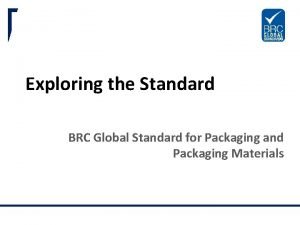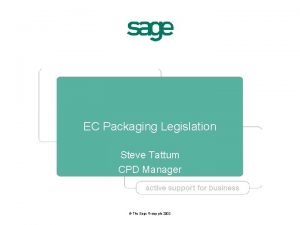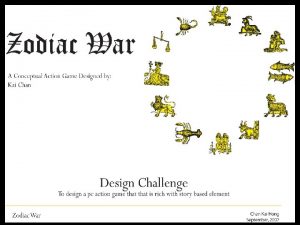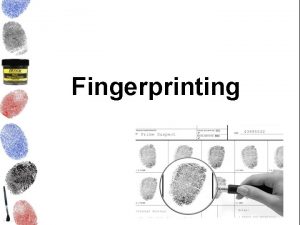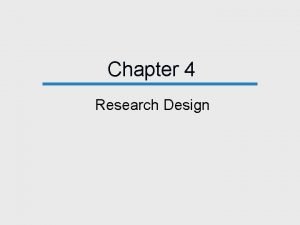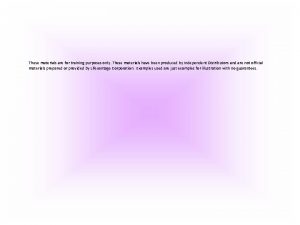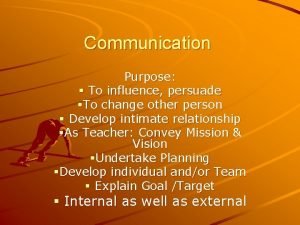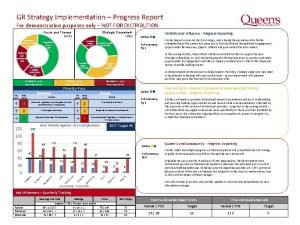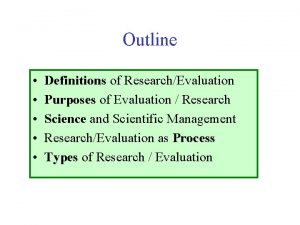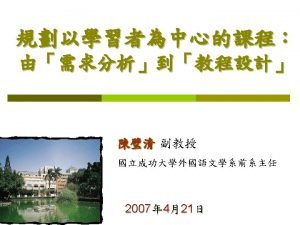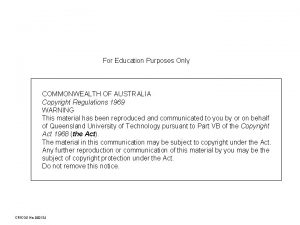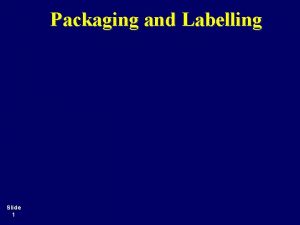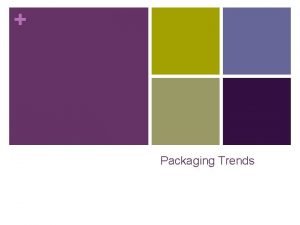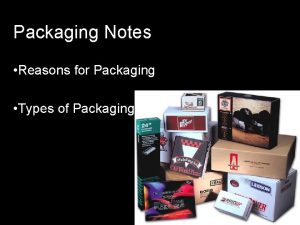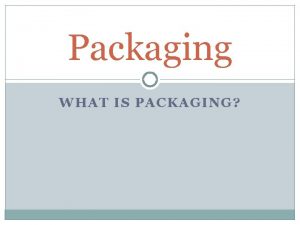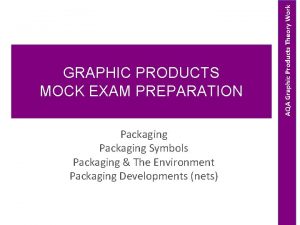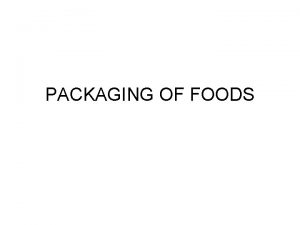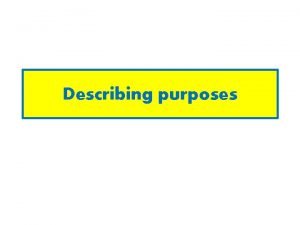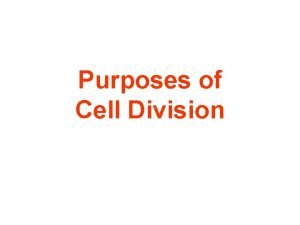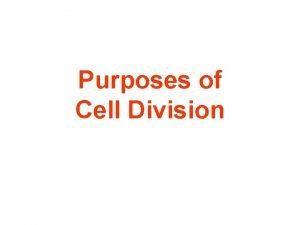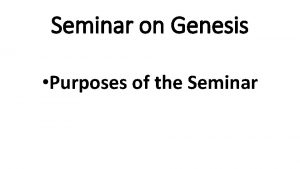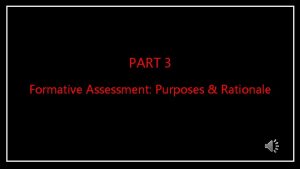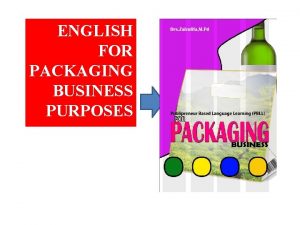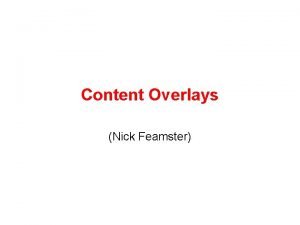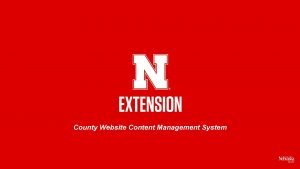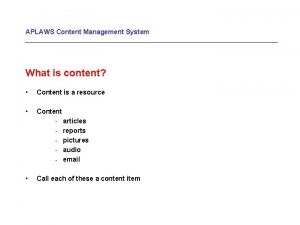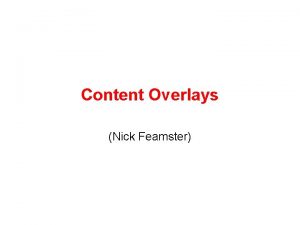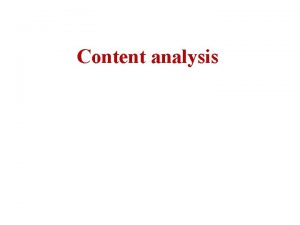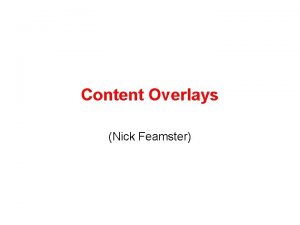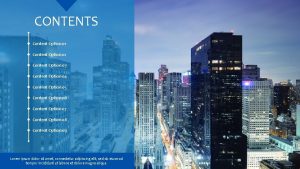PACKAGING 1 CONTENT Packaging Role of packaging Purposes


























- Slides: 26

PACKAGING 1

CONTENT Packaging Role of packaging Purposes of packaging Factors Benefits Types of packaging How brand image is related to packaging Trends and results for packaging 2

PACKAGING Packaging is the science, art and technology of enclosing or protecting products for distribution, storage, sale or use. Packaging also refers to the process of design, evaluation and production of packages. 3

PACKAGING Packaging can be described as a coordinated system of preparing goods of transport, warehousing, logistics, sale and end use. Packaging contents, protects, preserves, transports, informs and sells. 4

ROLE OF PACKAGING Packing is the ‘indispensable’ for shopping as we know it today – supermarkets could not exist without it. Product wastage in supply chain is now minimal. 5

ROLE OF PACKAGING Product presentation and information are key . Many markets owe their existence to developments in packaging -Packaged fruit juices -Packaged milk with longer shelf life 6

PURPOSES OF PACKAGING Physical protection Barrier protection Containment or agglomeration Information transmission Marketing Security Convenience 7

PACKAGING-Factors for consider - Product compatibility and stability Wood packaging requirements Mode of transport Cost Package safety Solid waste impact Security Food and perishable goods 8

PACKAGING-Factors for consider Use of packaging material made from recyclable, reusable or bio-degradable material. The label on the package is provided with information regarding the ingredients used. The package labels now days are generally accompanied by detailed instructions for proper use to maximize the performance and minimize wastage. 9

BENEFITS OF PACKAGING Important benefits of packaging: Enhances the marketability of product Improves the appearance and attractiveness of product Increases the shelf appeal of product Increases the shelf life of product Makes the product easy and convenient to use The product can be packed in different sizes to meet the varying demands of consumers 10

TYPES OF PACKAGING Primary packaging is the material that first envelops the product and hold it. This usually is the smallest unit of distribution or use and is the package which is in direct contact with the contents. 11

TYPES OF PACKAGING Secondary packaging is outside the packaging – perhaps used to group primary packages together 12

TYPES OF PACKAGING Tertiary packaging is used for bulk handling, warehouse storage and transport shipping. The most common form is a palletized unit load that packs tightly into containers. 13

DIFFERENT TYPES OF PRIMARY PACKAGING Ampoules Vials Containers Syringe Strip packages Blister packaging Closures (plastic, metal) 14

DIFFERENT TYPES OF SECONDARY PACKAGING Paper and board Cartons Corrugated fibers Box manufacture 15

Paper Board Lamination

Paper is not Thick and dense; Bulky; Tough and hard to fold; Hard to print onto. Bad for the environment.

Lamination contains several layers of foil, paper and plastic and does not Tear easily; Allow liquid through easily; Allow evaporation.

Plastic Packaging PVC – you can add plasticiser to make more rubbery. HDPE - stiff & can hold strong chemicals LDPE – very thin “film”, very cheap. PS – “expanded” version often used to protect electronics PP – flexes easily without breaking PET – strong, usually see-through

How brand image is related to packaging Packaging design criteria are used to make effective packaging 1. Recognition Requirements -Branding -Colour -Shapes 20

How brand image is related to packaging 21

How brand image is related to packaging 22

How brand image is related to packaging 23

How brand image is related to packaging 2. Image communication Requirements 3. Technical requirements 24

TRENDS & RESULTS OF PACKAGING The package designs are planned to reflect the many changing social and economic trends in the world. Several of those trends and resulting examples include: Health consciousness (nutrient and additive contents) Economy (various sizes, quality levels) Mobility (convenience items) Labeling requirements (contents and directions) 25

TRENDS & RESULTS OF PACKAGING Available equipment (products for the freezer or microwave) Time and convenience to purchase and use (various available sizes, complete meals in a package) Customs and social habits (beverage packaging) Environmental concerns (reduced, reusable and recyclable packaging) 26
 Brc standard 8
Brc standard 8 Packaging and packaging waste directive
Packaging and packaging waste directive What is esp
What is esp Static content vs dynamic content
Static content vs dynamic content Conclusion for language across curriculum
Conclusion for language across curriculum Role making role taking beispiele
Role making role taking beispiele Statuses and their related roles determine the structure
Statuses and their related roles determine the structure Azure web role worker role example
Azure web role worker role example Persuasive purposes
Persuasive purposes Looks like a bull’s-eye with two deltas
Looks like a bull’s-eye with two deltas Training purposes only
Training purposes only Draft for discussion
Draft for discussion Three purposes of research
Three purposes of research To avoid nulls some designers use special codes known as
To avoid nulls some designers use special codes known as For training purposes only
For training purposes only Designing and delivering oral and online presentation
Designing and delivering oral and online presentation The purposes of communication
The purposes of communication For demonstration purposes only
For demonstration purposes only English for specific purposes course design
English for specific purposes course design Regulatory signs examples
Regulatory signs examples Short authentic academic text
Short authentic academic text Evaluation research definition
Evaluation research definition Language for specific purposes
Language for specific purposes Cutting plane line example
Cutting plane line example Egp english for general purposes
Egp english for general purposes Script format
Script format Education purposes only
Education purposes only
